Tips to Help You Catch More Waves… More Waves, More Fun, More Surfing
An hour long surf session and just one wave… let’s give you some hacks for catching more waves.
Because just one wave, that’s frustration!
That’s not surfing, that’s floating, and perhaps 10 seconds of “surfing”.
That much floating and that little surfing, you could use some hacks to catching more waves….
Or, perhaps you just happen to be an absolute charger and you’re waiting for that perfect one to roll in and hit the sandbar at Puerto Escondido, or you’re waiting for that bomb at Cloudbreak.
My guess is you’re not in that realm of surfer since you’re reading this blog post.
You need to learn how to “play the field” and ultimately grab a few more waves!
I want to give you a few tips I’ve picked up along my surfing-life that I see too many “intermediate” and beginner-level surfers neglecting. Implement these tips and it will have a positive effect on your wave count.
Here are 3 Pro Hacks for Catching More Waves
POSITIONING
Sit where you can catch some waves…duh!
There’s a lot more to this simple statement and this tip alone could probably be broken down into multiple categories.
I’m going to chunk it into Reading a Wave, and Reading Other Surfers.
1) READING A WAVE: POSITIONING
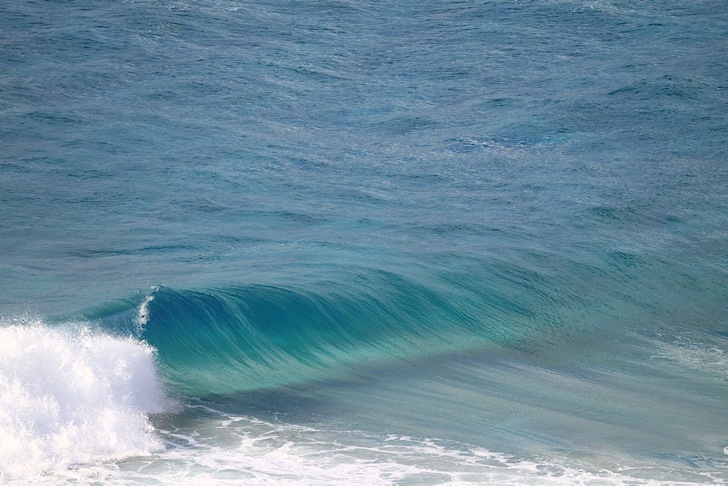
Growing up in Florida I surfed a lot of crappy wind-slop beach break surf. I learned how to read the ocean, read the bumps, grab the sets that snuck through, and developed a better visual representation of waves in my brain. I learned to read the ocean and read the subtle aspects of waves.
Also, I did a lot of saltwater flats fishing, including flyfishing where we often went sight-fishing. This involves fishing in really shallow water and either seeing the fish directly or reading the wake of the fish, the force of water produced by the swimming fish. It’s learning to read another subtle visual marker of water.
This once again leads to better visual mapping and understanding of waves.
I can read waves pretty well. Can you?
Ultimately your ability to read waves will affect your positioning which results in catching more waves.
Having now run Surf Coaching trips for years now, all over the world, I’m astounded at how little time our guests will spend watching a new lineup before hopping into the water.
We have a large spectrum of “intermediate” surfers on our trips, and often it’s exactly this group of surfers that would benefit from learning the nuances of a wave prior to hopping in.
- Where’s the main peak?
- How often are the sets pushing through?
- Are their smaller set waves that slip through the crowd up the top?
- Do the waves at the top look like they’re going to break, but then fatten out and break 50meters on the inside?
- What’s the tide doing? Will that effect the break over the next 45 minutes?
- Are there the occasional wide sets that nobody is getting?
- When out in the water do you have lineup markers on land to help you maintain your position?
These are questions that you need to be asking yourself as you look at the playing field of surf. It helps no one if you simply paddle out to the top with the other mob of people and just linger around and eventually paddle in a mass melee for a set wave.
Read the wave, the nuances, the subtleties, and then make more calculated decisions about where to sit in the lineup.
This requires that you make a focused effort on learning to read waves. If you have an interest in progressing in this wonderful sport and art of surfing, you need to build a more efficient visual representation and wave model in your brain.
This will help you to more efficiently read waves in the future, on surf trips, reef breaks, brand new beach breaks, and more quickly orient yourself on where to effectively sit. In return, you’ll catch more waves.
I need to interject a caveat here as well. With clients I’m too often asked about where people can go read about how to “read” waves, or where can they learn more.
You can learn more by actively watching waves. Paying specific and active attention to the water, reading the wave, watching where surfers are taking off, what does the draw of the wave off the bottom look like, does the wave fatten out, is that surfer taking off too deep, does the wave look like it’s going to break but not break for another 50 meters… The nuances are endless.
If I gave you a book “How to Read Waves”, it wouldn’t help you. It needs to be active participation while viewing a moving source of energy.
A book would have pictures, frozen in time moments, unchanging, so how would that help you learn to read movement and a variably changing surface? It wouldn’t.
So what I want you to do is PAY MORE ATTENTION.
This truly is a 10,000 hours process. You need to create, build, and enhance your mental models of waves.
Here’s a few tips and things to ponder in the lineup when actively watching waves.
– What does the wave actually look like where the better surfers are taking off?
– What does the draw of the wave look like? This refers to the draw of water off the bottom of the wave. Pay attention to the bottom of a wave and you’ll know what the top is going to do. Is the bottom fat and slow? If that’s the case, you know the top isn’t likely going to break. Is the bottom hollowing out and rapidly drawing water up the wave face? You know this wave is going to quickly break, and maybe even barrel! When I’m surfing, I pay attention to the bottom of the wave, because when I see that hollowing out, and I can judge the line, I know I’m about to get SHACKED!
– Did you miss a wave? Keep watching it…. Where did it eventually break? Another 30meters inside on the sandbar? Perhaps you need to reposition. If you did miss it, what did that wave actually look like? Who else caught it? Where were they positioned?
– Start trying to determine if someone is taking off too deep. Too deep for someone else may be a prime takeoff for you! You do this by looking down the line at what the rest of the wave looks like from where someone is taking off, and as mentioned previously, paying attention to the bottom of the wave. Is the wave drawing off the bottom 30meters down the line from where someone is taking off? It may close out on them, so pay attention to whether it does or not…
There are so many opportunities to catch waves that others have misjudged or mistimed, but it takes active watching and visual participation to determine this. Pay attention!
2) READING OTHER SURFERS: POSITIONING
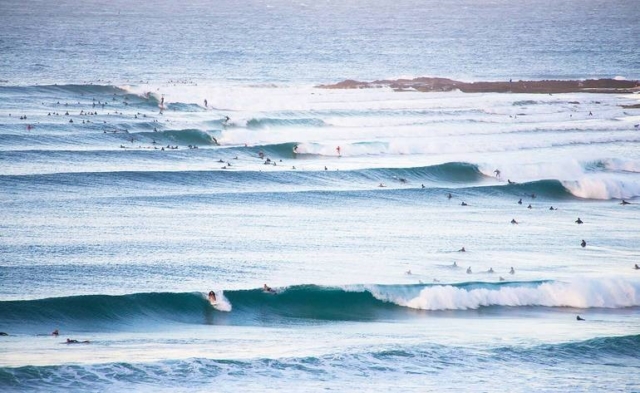
The second aspect of positioning is your location in relation to other surfers.
How well do you read the politics and pecking order of a lineup?
I’ve lived for a few years in Bali, and there’s a large spectrum of surfers on the island now. Often there are days that I’m astounded some of these surfers even make it out the back! Anyway, my point is I quickly get a read of the pecking order in the lineup. The who’s who of the break that day.
Are there a few surfers I can immediately write off as unskilled?
That may sound bad, but it’s true. If I see someone paddling around with their legs flopping around all splayed apart, I generally assume that they’re not a good surfer. That doesn’t mean I’m going to burn them or hassle them in the surf (I’m generally really friendly in the water), but I’m immediately taking note of the pecking order of things.
Is there a WCT pro sitting a few meters deeper on the reef than me? Then I can’t really expect to grab a legit set wave if it comes through, as he’ll be the first on the peak and have the skillset to take off deeper than I.
Have I seen a few older crew dudes consistently miss set waves because they’re not strong paddlers and the wave hasn’t quite stood up on the sandbar? Perfect! I’ll go sit just a bit inside of them and grab anything that sneaks through.
Are you seeing my point here?
Read the wave, and the lineup, and then make some decisions on your positioning.
This can be an ego trip for some, as it requires an honest reflection of your skillset.
Are you good enough to be sitting where you’re sitting? This is really a question of whether or not you have the skill to take off in that section of the wave? Is it a jacking reef break that will have a steep drop? Are you capable of dealing with that and are you riding the equipment that can handle that type of wave?
What is the skill level of surfers you’re surrounded by? If you’re a lower intermediate surfer you probably won’t catch many waves if you sit at the top with a bunch of higher level surfers. *Be friendly and polite, and you’ll be given a wave eventually, but this also depends on the energy of the lineup and how the top of the pack is dealing with waves and taking turns.
Is it a really good reef break and there’s a few really good surfers sitting just a bit deeper than you? If that’s the case it’s a very small chance you’re going to grab one of the set waves.
These are honest questions that if asked and answered well can reduce frustration and increase wave count.
I also want to point out that a few of the scenarios I mention above are part of the process and climbing the skill ladder of surfing. You do need to earn your place at the top. I’m 100% of the old school surf mindset that you need to earn respect in the lineup and put in your time.
Going back to my time in Indo, I’m astounded at the new breed of beginner and intermediate surfer that seems to give no shits about the lineage and respect of a lineup. Not only is it dangerous, but it’s disrespectful.
With that said, being polite, respectful, and chatty can go a long way in the lineup and help you to navigate positioning.
If I’m at a new break I hang in the back for a while and get a read of the layout, both waves, and surfers.
I pay attention to who knows who. Who’s catching waves. Who’s not catching waves.
I’ll chat with other surfers in the lineup and spark up conversation. I find it hilarious how non-communicative and agro so many surfers are in the water.
Complimenting other surfers’ waves is always a good way to earn some respect points and an easy way to start chatting.
Giving a wave away is one of the best ways to make a buddy in the lineup, and that karmic donation will likely be repaid.
From a personal perspective, and this comes from surfing all over the world, including many world-class waves, just be nice! If I’ve been chatting with another surfer and I’m aware that person may not be as skilled, or perhaps simply hasn’t caught a wave in a while, I will absolutely let them get a wave or try and call them into a good one. You get what you give in life!
I really want to point out that this “being chatty” tip works like a charm for women! Ladies, you underestimate the power and potential you have to influence the lineup, simply by chatting with some of the surfer dudes.
Many of the guys in the lineup are stoked to see women charging, and happily let them grab some waves. Ladies, simply let yourself be known in the lineup, chat a bit, own your position, and take what’s yours!
My whole point about positioning is simply to be aware. There are strange egos, politics, and chauvinistic tendencies in lineups. That is often the singular and competitive nature of surfing, unfortunately. Pay attention to these lineup nuances and help yourself catch some waves.
But yes, there is validity to the older school mindset of earning your place in the lineup. With that said, simply be polite, be cool, be friendly, and be aware, and it will help you immensely with catching some waves.
3) VOLUME… OR PADDLING EFFICIENTLY
Do you need more volume, or do you need to paddle efficiently, and most importantly, learn to read a wave?
The most relevant aspect of this is learning to read a wave, and knowing which waves to paddle for. This jumps back to the first point in this article: Learning to Read Waves.
Going back to my time in Indonesia, I have caught countless waves that I see someone else paddling for and I immediately know they have no chance of catching. It’s an easy opportunity for me to sneak in and grab what was missed.
It comes down to my ability to read a wave is better than theirs, simply through time and practice of reading waves.
I’m also a really efficient paddler. The second point of this “hack”.
So first and foremost, start paying more attention to waves, and being an active observer, ready to pounce on others’ missed opportunities.
Secondly, paddle efficiently.
I have an entire 25 minute video in the Surf Athlete 12 Week Program going over the Theory & Fundamentals of Surf Paddling. This is the stuff we teach on Surf Coaching Trips, and it’s the details we see Intermediate and Beginner spectrum surfers get wrong 90% of the time.
There’s no point changing volume until you learn how to paddle.
Here’s a link to a quick snippet of that video: Surf Paddling Theory & Fundamentals
View this post on Instagram
Efficient paddling starts with knowing how to read a wave and its power zones.
Are you placing yourself in the power zone to take off? That power zone is a much easier place to get momentum from the wave and use the inertia of physics, rather than flailing away on the shoulder trying to catch a wave that is uncatchable at your position.
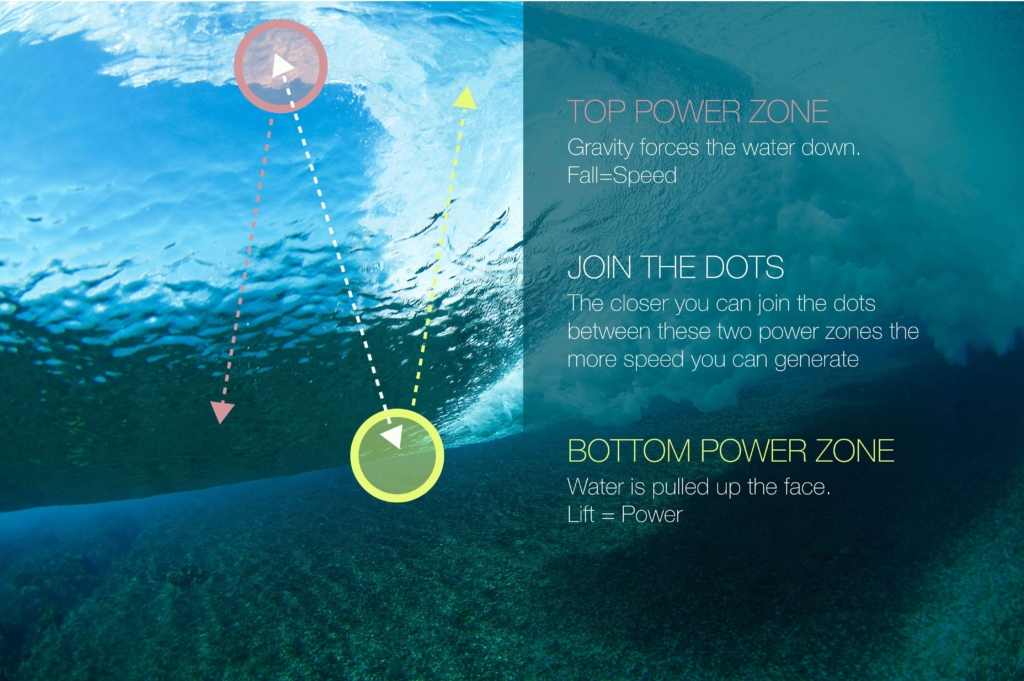
Wave positioning is key to effortlessly catching waves.
Posture and Paddling Efficiency…..
Eyes up, chest up. I won’t go deeper than that at the moment, you can check out that full 25 minute video, but the relevance of getting that chest up is paramount.
Does your spine move well? How about the neck (which is really predicated on the movement of your thoracic spine)? Can you get into that nice extended paddle posture?
If not, then it’s certainly something you should work on improving. Mobile spines = efficient paddling.
That spine position, arched up and extended, chest proud, is the foundation for your paddle stroke. That arched position not only helps to weight your board efficiently, but it also places your shoulder and the muscles surrounding it in a biomechanically efficient position for stronger paddle strokes.
Get that chest up. You may need to work on restoring spine range of motion to get into that arched position easily, but you may also need to improve work-capacity and endurance of the muscles along your spine to hold you in that extended/arched position.
Now that you’ve got that chest up, please please please stop flailing.
There’s a huge difference between flailing and paddling with intent.
Stop flailing. Paddle with intent, purpose, and precision. I can paddle with intensity and effort, but it’s still clean and precise.
Stop flailing!
View this post on Instagram
The last point of advice here, is to use your “gears” of paddling.
Yep, gears. Do you need to be in first gear to catch the wave, or fourth gear?
What is the wave requiring?
Not all waves require fourth gear speed or intensity. Perhaps you need to shift into fourth gear to charge 20 meters up the lineup to get into the perfect takeoff spot (power zone), to then turn, drop into first gear, and glide into that wave.
What the hell am I talking about with gears? I’m just referring to intensity of effort. Different gears, in ascending order, are different intensities and different outputs from arms and legs. *More on this in that Theory and Fundamentals of Surf Paddling video.
Speaking from experience having now run Surf Trips for over 5 years now, not all waves require flailing intensity to catch.
Most surfers seem to have only 1 speed for catching waves, and generally, it’s flailing chaos.
To once again reiterate very strongly, QUIT FLAILING. You’re basically just spinning wheels, making no forward progress, and seriously disturbing the planing surface of your surfboard. Even more to the point, what is the wave requiring!?
Can you easily 3 stroke paddle in? Or do you need to shift into another gear and up the intensity slightly so you can then get into the power zone and easily glide in?
Be more specific with your paddling intention and make smarter decisions about your output. Long surf sessions are all about energy conservation. Better energy management comes about from more efficient wave reading, determining what output or paddling gear is needed to get an easy wave entry, and paddling cleanly and efficiently.
Once those points are nailed, then we can talk about volume.
And volume is way too deep of a topic for this blog post.
Yes, volume can absolutely help, but volume will also dictate what you can and can’t do on a wave.
Too much volume and you’re surfing way out in front of the pocket and power zone, likely surfing midface and never touching a vertical turn.
But more volume may allow for easier wave catching abilities.
It can be a give-and-take scenario.
Yet I generally want to see surfers nailing their wave reading, paddle stroke efficiency, and paddle posture, and then we can really tweak some volume and enhance their surfing. Rather than using volume as a crutch.
Too many surfers just go straight to volume as a cheat for overcoming their bad habits, bad paddling, bad wave reading, and bad posture.
BONUS – 2 MORE MUST KNOW SURF HACKS
In writing this my mind wandered to two videos I made last year when I was still living in Bali, that I find to be valuable understanding and required awareness for surfing improvement.
These don’t necessarily directly correlate to catching more waves, but they directly impact your ability to improve your surfing.
The Skill Ladder: Unconscious Incompetence to Conscious Competence.
This IS the ladder to skill progression. You MUST walk this path, so you had better be aware of it.
Watch This: How to Surf Better – Awareness, Skill, and Failure
The second part of this “Bonus” is a video regarding how to Surf a Smaller Surboard.
I find the aspects I touch upon in the video to be rarely discussed when moving towards a smaller board, yet in my mind, they are the most important!
It’s all about changing your perspective, literally. You will be forced to look at a wave differently, interact with different parts of a wave, see steeper angles, look for different takeoff zones, and that’s not even considering the physical differences of surfing a smaller board.
What you will literally see, perceive, and interact with must change!
Please watch this: How to Surf a Smaller Surfboard – Don’t KOOK It!
Now Go Catch Some More Waves!
Pay more attention to the ocean, waves, and what that energy looks like visually. It’s not a “tomorrow” fix, it’s a surfing journey fix. You will enhance your wave reading ability with more practice and effort at reading waves. Start now, and in a few months time, a year, several years, it will pay dividends in wave rewards.
Read the pack, read the energy of other surfers, and play the field. The better you get at reading a lineup, the more efficiently you can position yourself. This ability will enhance your wave catching skills on all future surf trips, new spots, new places, and will ultimately help you to have more fun.
Stop Flailing…. I’ve nailed that one home! Paddle efficiently, please!



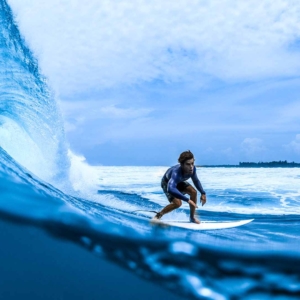
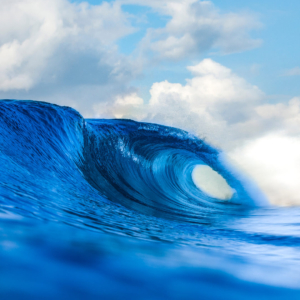
7 Comments